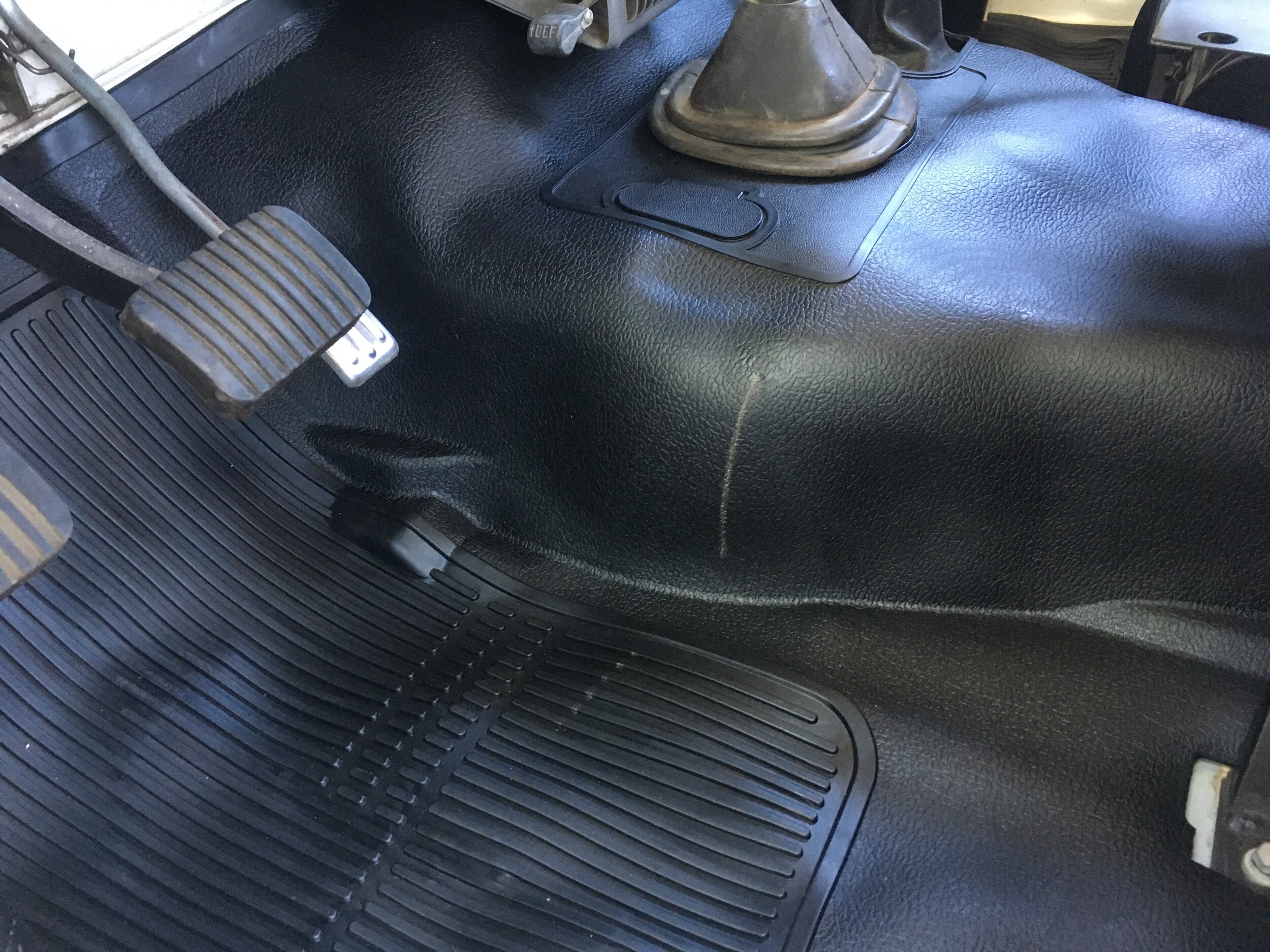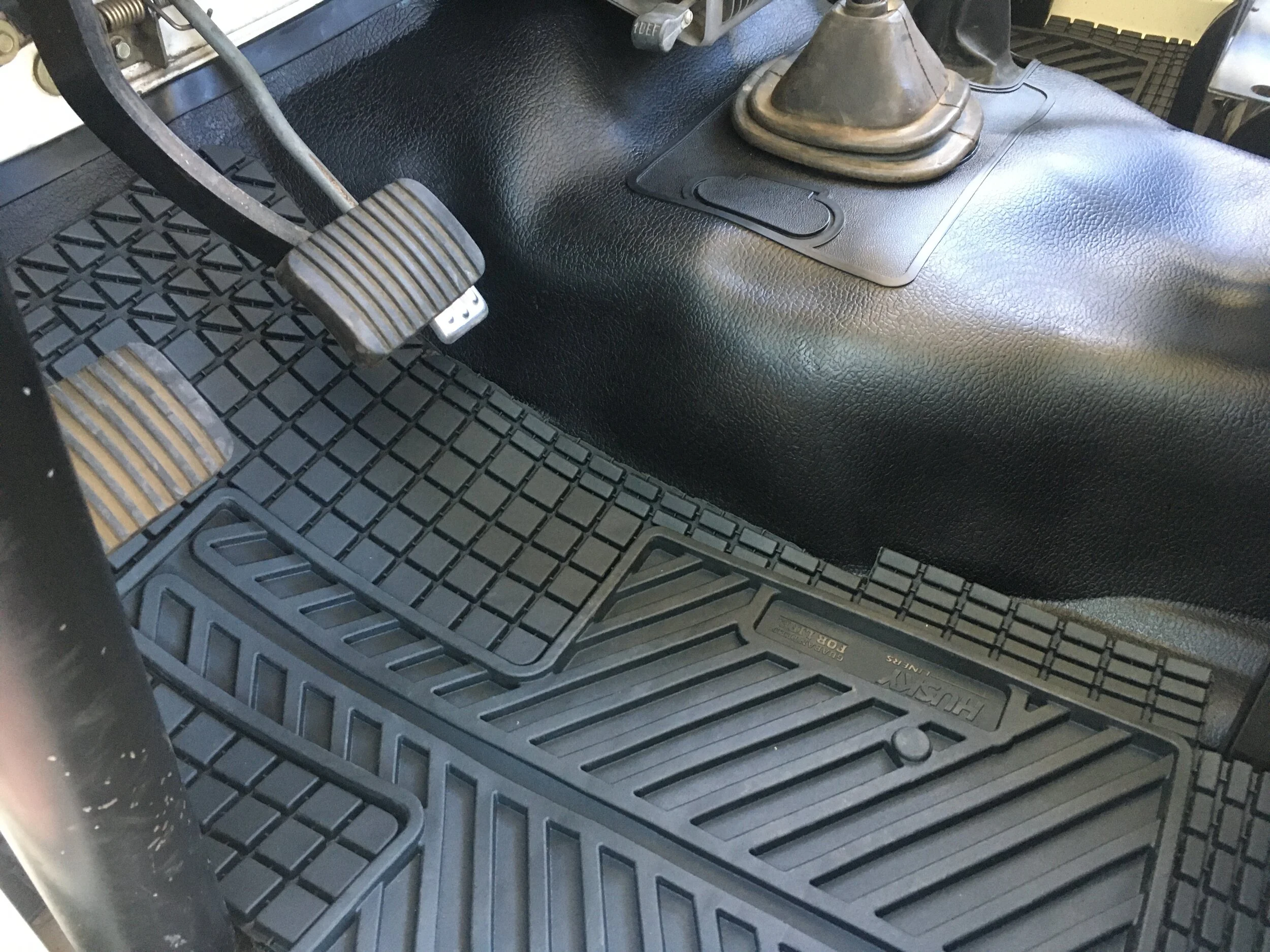
Overland Tech and Travel
Advice from the world's
most experienced overlanders
tests, reviews, opinion, and more
The Pro Eagle Off Road jack
A floor jack with off-road tires—why didn’t someone think of this before?
A floor jack is the easiest way ever to lift a vehicle on a concrete driveway. But most will be stopped in their tracks by a quarter-inch-diameter pebble. Pro Eagle took a two-ton floor jack, beefed up the chassis and added fat tires, and invented the all-terrain floor jack. The Pro Eagle rolled over my gravel driveway effortlessly, and lifted the entire front end of my FJ40 in a sandy wash without digging in more than a couple inches. Given the fat tires plus a full-length underbody “skid plate,” it shouldn’t sink in any substrate that doesn’t have a current.
The Pro Eagle barely sank lifting the front of the FJ40 in sand.
An adjustable extension post (stored near the base of the handle) pops on for a full 26 inches of lift height. I certainly wouldn’t carry this bulky, 52-pound jack for field duty in the FJ40 (although a convenient carrying handle helps moving it around), but if you’ve got a full-size truck or Sprinter (there’s also a 3-ton version) or are traveling with a group, it will make any recovery a breeze.
And, of course, at home it’s an excellent shop jack. I’ve abandoned my standard floor jack because the Pro Eagle is so much easier to move around—even in urban settings—and because of its greater lifting capability.
One operational note—like all such jacks, the lifting pad moves through an arc as it rises. A floor jack on concrete will roll slightly to compensate for this. If you employ the extension on the Pro Eagle, and the jack is immobilized in sand or rock, the extension can wind up tilted significantly at full extension. Plan ahead.
Pro Eagle is here. The two-ton model retails for $430.
2022 Toyota Tundra: Continuing the "My Grille is Bigger than Your Grille" Wars (EDITED)
Toyota has revealed some details of the 2022 Tundra. The most-featured news is the deletion of the long-serving V8 engine for a twin-turbocharged V6, following current popular trends in configuration and number of pistons. The top-of-the-line model produces 437 horsepower.
Other changes include rear coil suspension—a welcome upgrade and one the Tundra should have had from the beginning.
What I haven’t found out is if the Tundra’s sub-par “Triple-Tech” chassis, with open-channel frame members under the bed, has been ditched for a proper boxed chassis, as every competitor has. I still don’t know why the company abandoned boxed chassis in its trucks for a design similar to that found on Fords and Chevys in the 1970s.
More news as I uncover it.
EDIT: Ha! The 2022 Tundra has returned to a fully boxed chassis. Thank you Toyota. Along with the coil-sprung, multi-link rear axle, this represents a genuine leap in the design of this truck.
Three cheers!
Now, can we talk about that grille?
City Racer's high-quality floor mats (and other parts) for the FJ40
One of the happy corollaries to the recent increase in value of classic 4x4 vehicles such as the FJ40 and other Land Cruisers, first-generation Broncos, Series Land Rovers, and others, is the increased availability of both new old stock (NOS) factory parts uncovered by enthusiasts and parts suppliers stacked up on dusty shelves in dealers’ warehouses around the world, as well as re-created parts made by aftermarket suppliers.
Sometimes the NOS searches turn up gems, such as the never-installed H41 transmission and split transfer case I recently scored for my FJ40, courtesy Johnny Schaefer of Overland Cruisers who got four sets from a guy in Germany who found them in France.
Shopping for aftermarket copies of factory parts is much more fraught. Some are excellent, some okay, and some downright criminally shoddy. I’ve had some re-created door weatherstripping that didn’t come close to fitting or sealing. Many hydraulic parts from China (clutch master and slave cylinders, specifically) seem to last a fraction of the originals.
One bright spot is a company with a name you’d never associate with Land Cruisers: City Racer. Roger Peng started with a small selection of items, very carefully curated, and has slowly expanded the range. As yet I have had nothing from the company that did not meet or exceed factory quality, and he continues to unearth NOS parts as well. My FJ40 rides on a set of his 16x6” steel rims with hubcap clips, possibly the perfect combination for an FJ40 not intended as a rock buggy. I’ve also installed his disc brake booster and numerous other bits.
One City Racer part that most definitely exceeds factory specs is a fully molded front floor mat for the FJ40, made to the exact size of the original but of vastly superior injection-molded PVC, which will not only far outlast the thin stock material but will dampen sound better as well. It’s wincingly expensive at $450—shocking unless you know that the original, when still available, retailed for nearly that much, and Toyota must have made zillions of them.
With tin snips and a box cutter, it took me about 15 minutes to make the few modifications I need to the mat, to fit around my aftermarket front roll cage and the safe I have bolted under the front seat. Otherwise the fit was perfect, even molded around the small protuberances on the edge of the transmission tunnel. I was surprised at how much it improved the looks of the entire interior.
Of course, what does one do with a handsome expensive floor mat? Why, cover it up to protect it, of course. Seriously, the City Racer mat, like the original, would not be very good at containing mud from boots, so I bought a set of universal-fit mud mats from husky, which are easily trimmed to suit most applications. The combination looks great, noticeably reduces road and transmission noise, and should last long enough to fully recoup the investment.
Hint: When using “Search,” if nothing comes up, reload the page, this usually works. Also, our “Comment” button is on strike thanks to Squarespace, which is proving to be difficult to use! Please email me with comments!
Overland Tech & Travel brings you in-depth overland equipment tests, reviews, news, travel tips, & stories from the best overlanding experts on the planet. Follow or subscribe (below) to keep up to date.
Have a question for Jonathan? Send him an email [click here].
SUBSCRIBE
CLICK HERE to subscribe to Jonathan’s email list; we send once or twice a month, usually Sunday morning for your weekend reading pleasure.
Overland Tech and Travel is curated by Jonathan Hanson, co-founder and former co-owner of the Overland Expo. Jonathan segued from a misspent youth almost directly into a misspent adulthood, cleverly sidestepping any chance of a normal career track or a secure retirement by becoming a freelance writer, working for Outside, National Geographic Adventure, and nearly two dozen other publications. He co-founded Overland Journal in 2007 and was its executive editor until 2011, when he left and sold his shares in the company. His travels encompass explorations on land and sea on six continents, by foot, bicycle, sea kayak, motorcycle, and four-wheel-drive vehicle. He has published a dozen books, several with his wife, Roseann Hanson, gaining several obscure non-cash awards along the way, and is the co-author of the fourth edition of Tom Sheppard's overlanding bible, the Vehicle-dependent Expedition Guide.











